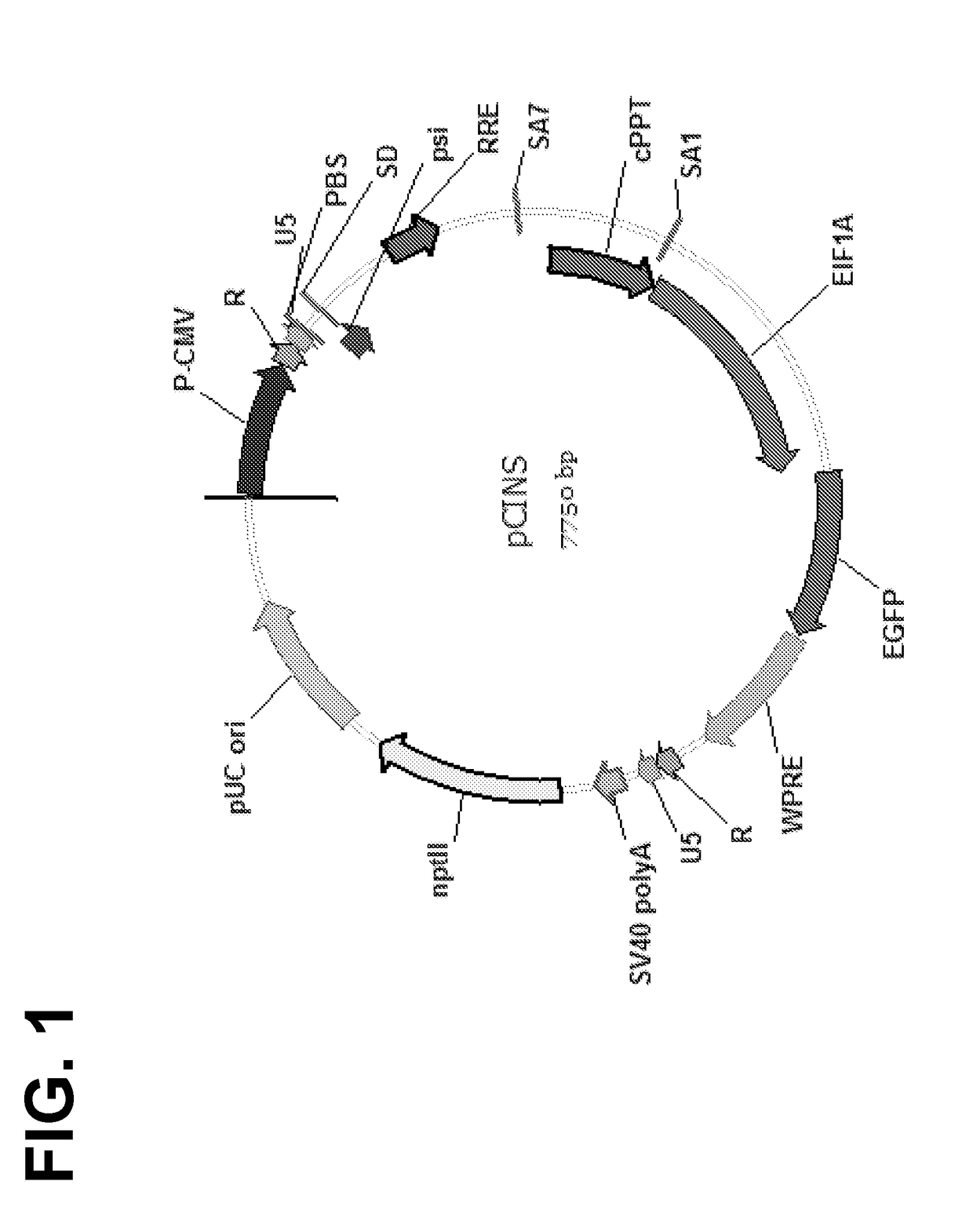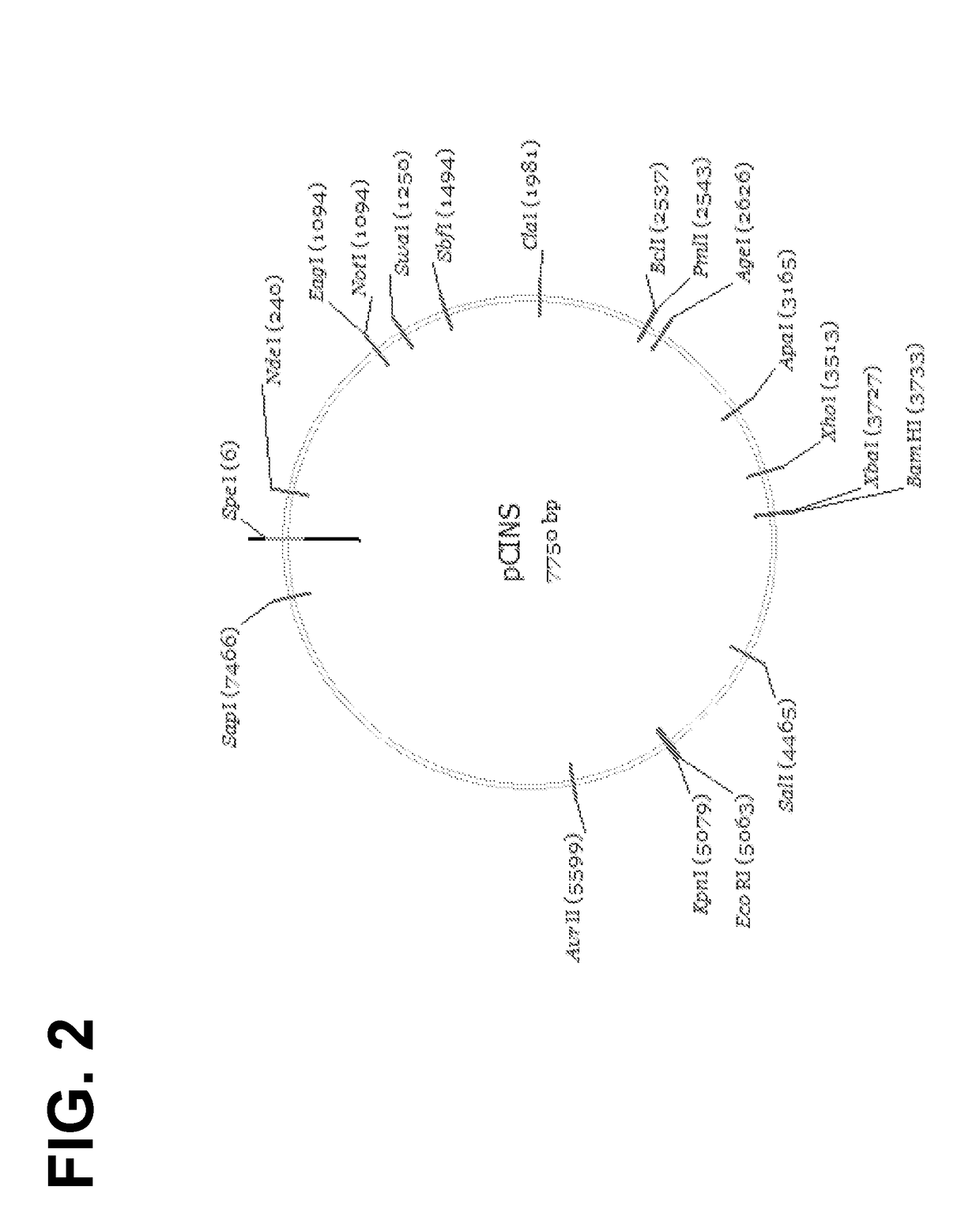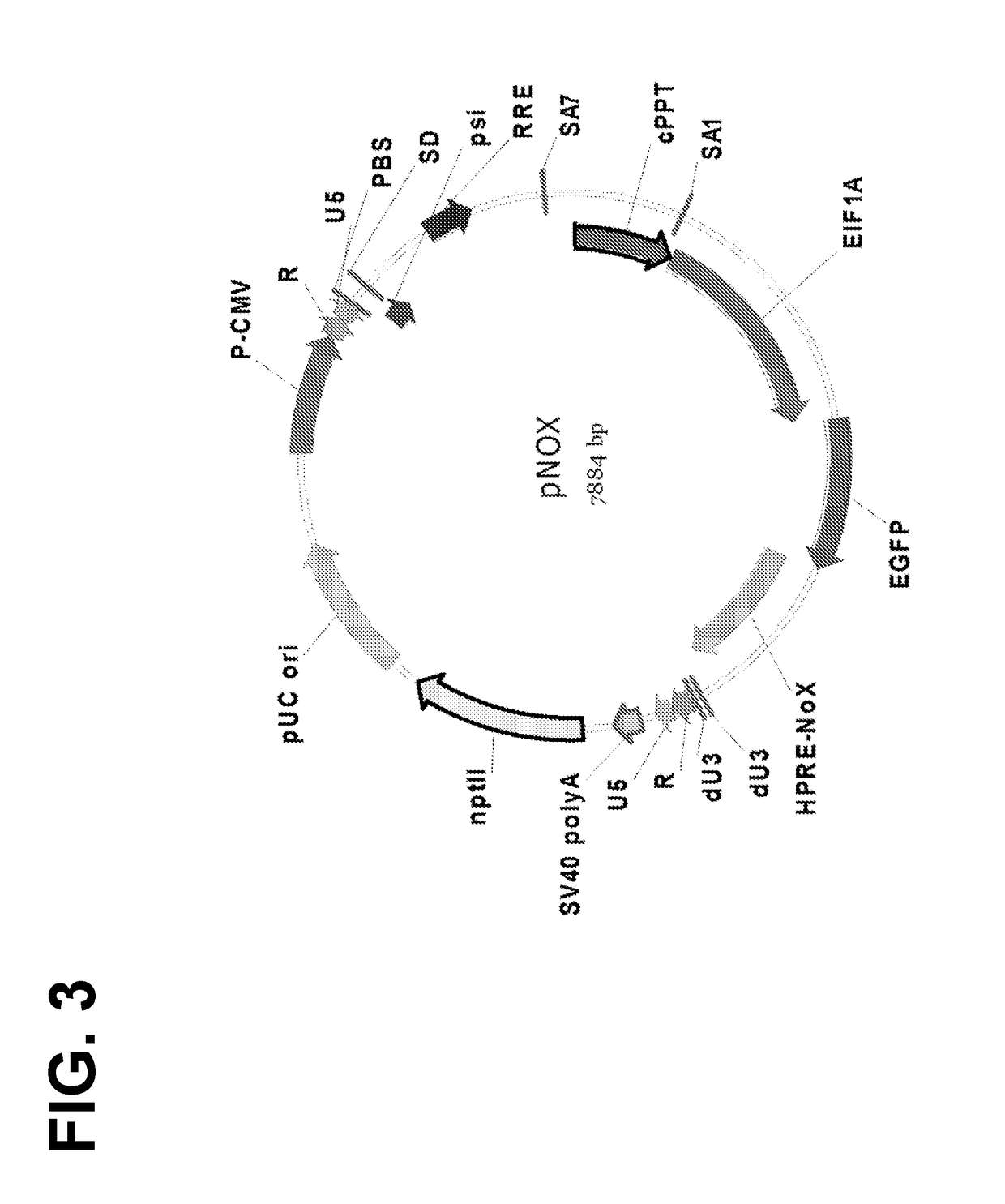Optimized lentiviral transfer vectors and uses thereof
a technology of lentiviral transfer and vector, applied in the field of lentiviral transfer vectors, can solve the problems of low gene expression level of existing lentiviral transfer vectors, high cost, inefficient, laborious, etc., and achieve the effects of increasing viral genomic rna, increasing nuclear export of rna, and increasing viral titer
- Summary
- Abstract
- Description
- Claims
- Application Information
AI Technical Summary
Benefits of technology
Problems solved by technology
Method used
Image
Examples
example 1
n of the pCINS Vector
[0441]The parental lentiviral transfer vector pRRL.SIN.cPPT.EF1a.EGFP.W PRE was synthesized de novo by DNA2.0 using sequences derived from the backbone of pRRL.SIN vector made by Dull et al. (J. Virol. 72: 8463-8471, 1998; incorporated herein by reference). A feature map of pCINS is set forth in FIG. 1, while a restriction map of the vector is set forth in FIG. 2.
[0442]In generating the pCINS vector, the following modifications were made to the parental vector:[0443]1. 5′ cis elements were replaced with the corresponding natural sequence from HIV-1 isolate NL4-3. The replaced 5′ cis elements included: packaging signal (psi), partial gag sequence adjacent to psi, Rev-response element (RRE) and the partial env sequence surrounding it, and a central polypurine tract (cPPT) sequence from pol.[0444]2. The SV40 and f1 origins of replication were removed as redundant to decrease plasmid size.[0445]3. Several restriction sites were introduced between the cis elements to...
example 2
n of the pNOX Vector
[0450]The pCINS vector generated in Example 1 was further modified to produce the pNOX vector. In particular, the post-transcriptional regulatory element (PRE) of woodchuck hepatitis virus (WPRE) present in pCINS was replaced with a PRE from hepatitis B virus (HPRE), which includes the natural sequence of hepatitis B virus isolate bba6, complete genome (GenBank: KP341007.1). WPRE was present in the parental vector to ensure efficient expression of the transgene. However, WPRE contains an X protein-coding sequence. The presence of the X protein ORF in WPRE may pose safety issues for integrating lentiviral vectors. For example, X protein has been implicated in the generation of liver cancers (Gene Ther. 12(1):3-4, 2005; incorporated herein by reference). In the pNOX vector, a point mutation was introduced in the start codon (ATG->AGG) of the X protein. As a result, the recombinant HPRE contains no X protein ORF. A feature map of pNOX is set forth in FIG. 13, while ...
example 3
ers Generated Using the pCINS and pNOX Vectors
[0452]To determine the efficacy of the pCINS and pNOX lentiviral transfer vectors, a series of experiments was performed, in which one of the transfer vectors was introduced into cells using transient transfection of packaging cells. Briefly, Expi293™ cells (ThermoFischer) were grown in 5 ml of Freestyle (FS) medium at concentration 5 mln / ml at 200 rpm, 37° C. and 8% CO2, 80% humidity. Transfection was performed using PEIPro Transfer Reagent (PolyPlus) using 3 pg pNVS-MDLgp-RRE, 3 pg pNVS RSV Rev-Kan, 0.75 pg pNVS-MDG-VSVG-Kan, and 6 pg transfer vector (pCINS or pNOX). Viral supernatants were collected 48 hours after transfection and subjected to titer analysis (i.e., measurement of infectious titer).
[0453]In 293T cells, the pCINS plasmid transfer vector generated a viral titer approximately five times higher than that generated by the parental vector (FIG. 5A). Titer was evaluated based on percentage of GFP-positive cells. This unexpect...
PUM
| Property | Measurement | Unit |
|---|---|---|
| Fraction | aaaaa | aaaaa |
| Volume | aaaaa | aaaaa |
| Length | aaaaa | aaaaa |
Abstract
Description
Claims
Application Information
 Login to View More
Login to View More - R&D
- Intellectual Property
- Life Sciences
- Materials
- Tech Scout
- Unparalleled Data Quality
- Higher Quality Content
- 60% Fewer Hallucinations
Browse by: Latest US Patents, China's latest patents, Technical Efficacy Thesaurus, Application Domain, Technology Topic, Popular Technical Reports.
© 2025 PatSnap. All rights reserved.Legal|Privacy policy|Modern Slavery Act Transparency Statement|Sitemap|About US| Contact US: help@patsnap.com



